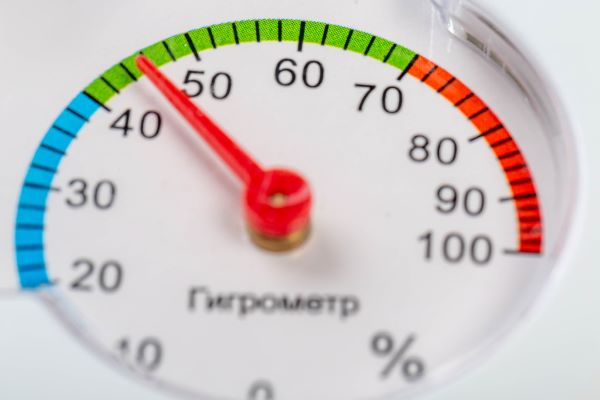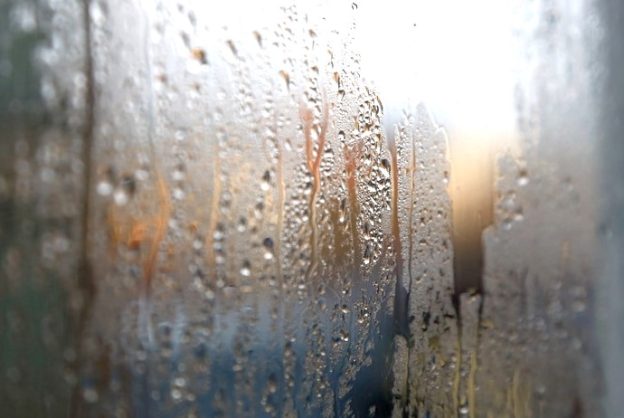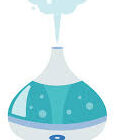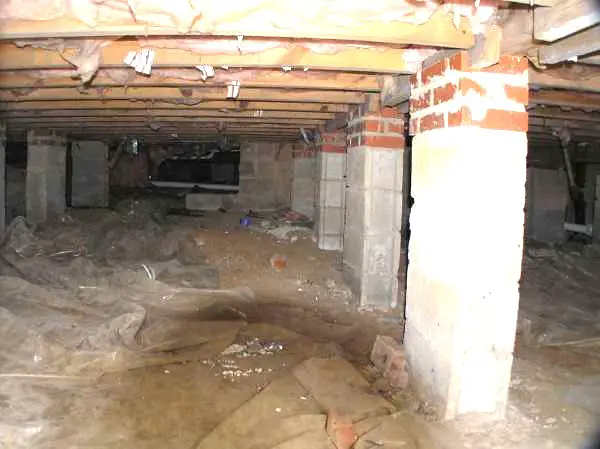The Recommended Crawl Space Humidity Level
Close to 20 percent of American homes have a crawl space. This is the space that is beneath the floor of the house, but because of the short height, it cannot be referred to as a full basement.
Actually, the reason it is referred to as a crawl space is that it does not offer ample standing room, since most are about 5 feet high.
All the same, you need to control the humidity level in the crawl space. The same way that you would control humidity in the basement, it is the same way that you should control it in a crawl space.
So, ideally, what should crawl space humidity be? As a general rule, the humidity level in any part of your house should never exceed 55%. If it gets higher, mold starts to grow at 60% humidity. And you do not want that! And mold is not your only worry because high humidity can spread around the house and damage books, paintings, and furniture. High humidity damages electronics too. If it gets lower than 30 percent, it causes warping of your house and furniture.
Best crawl space humidity level for summer

The humidity level that you need to maintain for your home will differ from season to season. For instance, in summer, keep the humidity level between 30 and 50%. Of course, some sources say that you should keep it between 45 and 55%.
They are right, as long as it does not dip below 30%, or rise above 60%.
In the summer, the humidity is usually high outside. Since outdoor humidity affects indoor humidity, you should keep it slightly lower if you live in a place like Seattle which has high humidity.
You should not exceed 45% for your crawlspace humidity in summer, and even this applies to places like Las Vegas in Nevada, or Bishop in California. In these places, the summers can be too dry, so you need to use a humidifier to raise the humidity level.
Florida summers are humid. Therefore, you would need to run the dehumidifier to lower the humidity level.
There is no specific figure that I can give you for your indoor humidity level. Just keep an eye on the hygrometer and humidistat so that when the indoor humidity level rises above 50% in summer, you can plug in the dehumidifier to control it.
Most of the time, for your basement, crawl spaces, and attic, you will need to use a dehumidifier in summer, to ensure the humidity level does not rise above 55%.
Best humidity level for crawl spaces in winter

In the winter, you should keep the humidity level in the basement between 30 and 40%, perhaps even 45%, but never higher than that.
While every home is different, the 30 to 40% humidity level is a good guideline to follow. Generally, if you cannot see condensation on the windows, well, that means you are good.
Do not lower the humidity level below 305 because that would be too dry. It can cause warping of wooden materials and items in the crawl space.
Some people do not even try to control the humidity level in their crawl spaces. Rather, they install an exhaust fan, and just let it run.
Some people also prefer to keep the humidity level at 50 percent, for any space in their home, including the basement or the crawl space.
You can do the same, as it pretty much eliminates any guesswork. It keeps the humidity levels sane in your home throughout the year, since it won’t cross the recommended threshold of 30 to 50%.
Is 70% humidity too high for crawl space?
Earlier, I published a post on whether 70 percent humidity is high. One thing that I pointed out during that time, and I still maintain is true, is that such a humidity level is high everywhere. It is high inside and outside, irrespective of the temperature.
Whether it is winter or summer, 70% humidity is high for the crawl space. It can lead to condensation on the walls, and the growth of mold.
If there is some warm air creeping from the rest of the house to the space. Such can be the cause of mold toxicity illness in your family, so you really need to control it.
To be on the safe side, keep the humidity level in your crawl space between 45 and 55% or 30 to 50 percent, depending on your needs.
Experts agree that the best humidity level for this space should be 55 percent. If it goes above 60 percent, mold will start growing.
Even then, keep an eye on the crawl space and if you start seeing condensation forming on surfaces at 55% humidity level, you should lower the humidity a bit, by running the dehumidifier.
What causes high humidity in the crawl space?

It is uncommon to have high humidity in the crawl space, especially in winter. Therefore, if you realize that it is rising above 60%, well, you need to find out what is causing that.
A problem identified is a problem half-solved. Here are some of the most common causes of humidity in this crucial space:
Humid air comes in through the vents
You can only control the humidity level of your indoor spaces, and not the outdoors. Thus, the outdoor air is more humid than the indoor air. Therefore, if it finds its way into the crawl spaces, as it definitely will, it raises the humidity level.
If you experience humid summers in your place, it might be a good idea to seal the room’s ventilation to keep the humid air outside.
That way, you will not need to use the dehumidifier too much, which is a good thing. While they do a good job, humidifiers consume electricity, racking up the bill.
Soil evaporation
If you do not have a vapor barrier and have just used the soil to cover the walls of the crawl space, you will experience high humidity.
This happens when the moisture from the soil starts evaporating. Even if the soil looks dry, if you dig it up a little, you will see it is moist. This moisture can also get in through cracks in the walls.
Another way that moisture in the soil can raise your humidity level is when the foundation walls absorb it. It will eventually permeate to the inner side and start evaporating inside the crawl space, raising the humidity.
Solution: Use a polythene paper to create a barrier between the soil and the walls/foundation of the crawl space.
If there are leaks or standing water
Most crawl spaces carry the ductwork for the HVAC, furnace humidifiers, and others. They also carry water pipes, which can deteriorate with age, and start leaking. The leaking water starts to evaporate, and that raises the humidity level.
Another problem is standing water outside the crawl space. You might think that the water is just on the ground surface alone, but that is not right.
It seeps deep into the soil around the walls of the foundation and the crawl space and eventually finds its way in.
This is why most people notice high humidity after raining, if the drainage is not good and there is plenty of standing water.
In this case, the solution is to seal any leaking pipes. Repair your drainage system so that when it rains, there is no stagnant water outside your basement.
Laundry room next to the crawl space
If you have divided up the crawl space and created a laundry room in one, you could experience high humidity, coming from your laundry activity.
Thankfully, you can use a dehumidifier in the laundry room, to control the humidity level. That way, you will not be dealing with high humidity from the laundry room.
Also check my review articles on:
Best small dehumidifiers for bathroom
Best dehumidifiers for 4 by 4 grow tent
Best humidifier for a 3 by 3 tent
Does mold grow in the freezer?
Wrapping it up
The crawl space humidity level should be maintained between 30 and 55%. To remove all guesswork from the picture, you could just set the humidity level at 50% throughout the year.
If you live in one of the most humid cities in the USA, always keep an eye on the humidity level in the basement, or crawl space.
As you maintain the right humidity level for all the rooms in your home, do not forget the basement or the crawl space. If you ignore these spaces, humid air will flow from there to the rest of the house.

